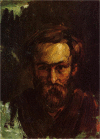Creating the Components for Teaching Concepts
- PMID: 34631382
- PMCID: PMC8458507
- DOI: 10.1007/s40617-021-00626-z
Creating the Components for Teaching Concepts
Abstract
An important dimension of Direct Instruction (DI) programs involves teaching conceptual behavior related to broadly applicable generalizations of a content domain. The current article outlines the necessary components for teaching a concept in any domain. The first step (1) is to conduct a concept analysis of the critical features that define the concept, as well as the features that vary from instance to instance of the concept. From this prescription we must (2) develop a range of typical and far-out examples of the concept that illustrate both the critical and variable features, (3) develop a minimum rational set of close-in nonexamples of the concept, each of which is missing only one critical feature, (4) develop matched example/nonexample pairs to highlight the critical feature missing in each example, and (5) develop additional examples and nonexamples that may be needed to produce the desired discriminations. Multiple exemplar teaching is not enough. Teaching a concept this way produces generative responding to examples as well as nonexamples not presented during instruction. To assess learners' generative responding, we must (6) create another set of far-out examples and close-in nonexamples from the concept-analysis prescription. Finally, after initially acquiring conceptual behavior, learners must (7) practice with additional far-out examples and close-in nonexamples. Once these components are created, a teacher is ready to develop an instructional sequence featuring tasks that include context-setting descriptions, rules, examples, and nonexamples.
Keywords: Instructional design; concept learning; generative responding.
© Association for Behavior Analysis International 2021.
Conflict of interest statement
Conflict of InterestThe authors declare that they have no conflict of interest.
Figures











References
-
- Becker, W. (1986). Applied psychology for teachers: A behavioral cognitive approach. Science Research Associates.
-
- Engelmann, S. (1969). Conceptual learning. Dimensions..
-
- Engelmann, S., & Carnine, D. (1991). Theory of instruction (rev. ed.). National Institute for Direct Instruction.
-
- Johnson DA. The need for an integration of technology, behavior-based instructional design, and contingency management: An opportunity for behavior analysis. Revista Mexicana de Analisis de la Conducta [Mexican Journal of Behavior Analysis] 2014;40:58–72. doi: 10.5514/rmac.v40.i2.63665. - DOI
LinkOut - more resources
Full Text Sources

